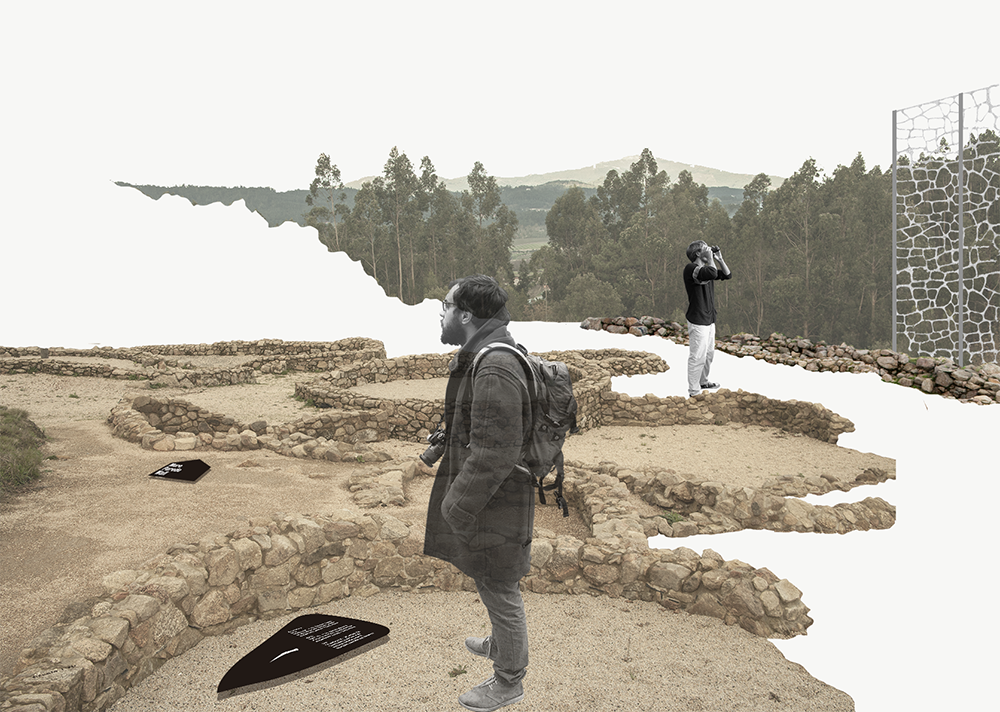The challenge of making an archaeological dig into a museum lies in adapting to the reality of the landscape without making it more difficult to properly see the ruins the visitors have come for. Leve Projects was commissioned to curate a castro, a pre-Roman fortified settlement that is common in Galicia, and to create a link to the other castros, which wouldn’t be curated but would act as a network of sites explaining social life at the time.
The castros are located in steep areas to protect their inhabitants. They tend to be circular, with narrow, complicated entrances. While the structure of the castros was complex, their location makes the job of curating them a way to not only recover the history within their walls but also to understand their connection with the surroundings and with other castros that can be seen on neighbouring hills.
To draw connections between all of the castros, we prepared an informational board for the visitors centre at the site that would be turned into a museum, which used a diagram to indicate the services available (parking, toilets, etc.) and museum elements (visitors centre, signage, etc.), prioritising the interventions by visitability. On other maps with information on heritage, festivities, nature and ecology, we marked the network of castros.
In terms of the museum curation of what was considered the main castro, Monte do Castro, we opted for keeping the original entrance. This meant walking around the hill from the parking area. To do so, the path between the entrance and the parking area included introductory elements on the landscape and interactive elements encouraging visitors to touch the stones in the wall and listen to the natural environment.
Once inside the castro, it is important to understand that, more than a museum, it is an archaeological site. So, all of the information was put on the ground. When referencing objects found there, we played with a real-size negative in black and white right where the item was found, giving visitors an idea of how each of the spaces in the fort were used. We also used different colours of dirt to differentiate the spaces.
As, over the years, the walls have crumbled and only the lower part is still standing, we decided to put a metal mesh simulating stones in strategic spots to show visitors how high the wall surrounding the settlement was. This resource is particularly important at the entrance because after taking the path up to the top of the hill visitors get to the original entrance, a narrow corridor surrounded by high walls that didn’t go anywhere inside the castro, dead-ending at the first inner wall.
The metal mesh here acts to re-create the original sensation of protection without affecting the ruins. Plus, visitors take exactly the same route as the original inhabitants of the castro, making the visit a meaningful experience. Also, inside the castro there are places to stop and look at the landscape, where we also explain how the original inhabitants of the fort lived in connection with nature, fields and other settlements.


